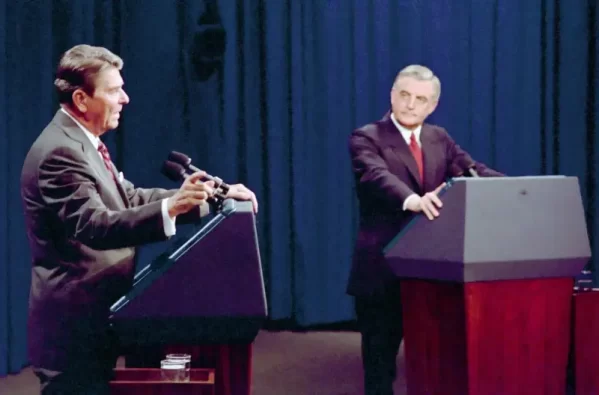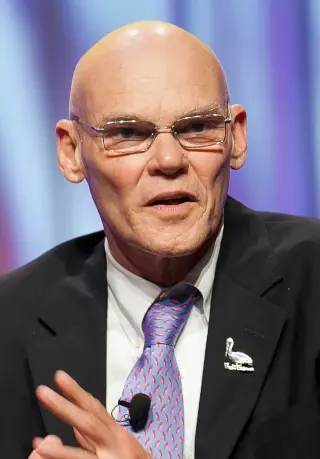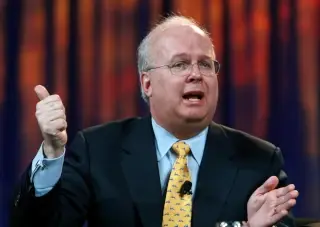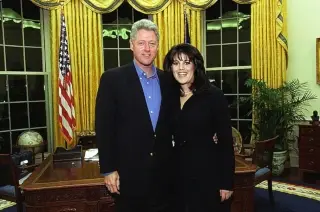Introduction
Spin doctoring has become a pervasive element in the political and media landscape of the United States. As a practice, it involves the strategic manipulation of information to influence public perception and opinion. This article will explore the meaning of spin doctoring, its origins, and how it operates within the context of U.S. politics today. We will delve into academic definitions, and historical examples, to provide a comprehensive understanding of this phenomenon.
Table of Contents
What is Spin Doctoring?
Spin doctoring refers to the practice of strategically presenting information to influence public perception and opinion. According to academic sources, spin doctoring involves the deliberate crafting of messages to shape how events or policies are interpreted by the public. This manipulation can take various forms, including selective presentation of facts, euphemistic language, and emotional appeals. The goal is to control the narrative and influence how the audience perceives the information being presented
Historical Background
The term “spin doctor” first appeared in the 1980s. It is believed to have been popularized during the 1984 United States presidential election. The phrase was used to describe the strategists and advisors who were adept at manipulating media coverage and public perception to favor their candidates.
According to some sources, it was first used in a New York Times editorial on October 21, 1984, which referred to the presidential debate between Ronald Reagan and Walter Mondale.

The editorial described how political aides were engaged in “spinning” the debate’s outcome to present their candidates in the best possible light. Since then, the term has become a staple in political and media discourse, denoting individuals who skillfully manage and manipulate information to shape public opinion.
Moreover, the practice itself has been around for much longer. Historically, political leaders and their advisors have used various forms of propaganda to sway public opinion.
For instance, during World War I, World War II, Korea, Vietnam, and Panama the U.S. government employed extensive propaganda campaigns to garner public support for the war effort. In modern times, the techniques have become more sophisticated and integrated with media and communication strategies.
Techniques of Spin Doctoring
Common strategies used by spin doctors include:
- Framing: Presenting information in a way that emphasizes certain aspects while downplaying others.
- Euphemism: Using mild or vague terms to describe something more harsh or direct.
- Selective Disclosure: Sharing only certain pieces of information to shape the narrative.
- Deflection: Redirecting attention away from negative aspects by focusing on other topics.
Spin Doctoring in U.S. Politics
Spin doctoring plays a crucial role in modern political campaigns. Political spin doctors work tirelessly to manage the public image of their candidates and shape media coverage. They craft speeches, prepare responses to potential scandals, and strategize on how to present policy proposals in the most favorable light. This manipulation can significantly influence election outcomes and policy debates.
Famous Spin Doctors
James Carville
Chester James Carville Jr. is an American political consultant, author, and occasional actor, known for strategizing for political candidates both in the United States and in over 23 countries worldwide.

James Carville, also known as the “Ragin’ Cajun,” is a renowned political consultant and spin doctor who played a significant role in Bill Clinton’s 1992 presidential campaign. Carville’s aggressive and unrelenting approach to political strategy helped Clinton secure the presidency.
Spin Tactics Used:
- “It’s the Economy, Stupid: Carville coined this famous phrase, which became the campaign’s central message. By focusing on economic issues, he shifted the narrative away from Clinton’s personal scandals and emphasized his plan to revive the struggling economy. This clear and concise message resonated with voters and became a defining feature of the campaign.
- Deflecting Scandals: During the campaign, Clinton faced allegations of marital infidelity and draft dodging. Carville effectively deflected these issues by attacking the credibility of the accusers and framing the scandals as politically motivated smears. This strategy helped to keep the focus on the campaign’s core economic message.
Karl Rove
Karl Rove, often referred to as “Bush’s Brain,” was a key advisor and spin doctor for George W. Bush. His strategic thinking and mastery of media manipulation were instrumental in Bush’s electoral successes.

Karl Christian Rove is an American Republican political consultant, policy advisor, and lobbyist. He served as Senior Advisor and Deputy Chief of Staff during the George W. Bush administration until his resignation on August 31, 2007.
Spin Tactics Used:
- Swift Boat Veterans for Truth: During the 2004 presidential election, Rove orchestrated a campaign to discredit Democratic candidate John Kerry’s military service. The group Swift Boat Veterans for Truth released ads that questioned Kerry’s Vietnam War record. Although many claims were later debunked, the campaign effectively cast doubt on Kerry’s heroism and weakened his appeal to voters.
- War on Terror Framing: Rove and his team framed the Bush administration’s response to the 9/11 attacks as a decisive and heroic effort to protect the nation. By emphasizing Bush’s leadership during the crisis and framing the invasion of Iraq as a necessary step in the War on Terror, they managed to maintain public support despite growing controversies over the war’s justification.
Alastair Campbell
Alastair Campbell, a former journalist, became a strategist and spokesman for Tony Blair and New Labour. He is currently a writer, consultant strategist, and mental health campaigner.

Alastair Campbell was the Director of Communications and Strategy for British Prime Minister Tony Blair. Though not American, Campbell’s techniques and their influence on political communication are widely studied and relevant to the U.S. context.
Spin Tactics Used:
- The “Dodgy Dossier”: Campbell was involved in the production and promotion of a dossier that made the case for the 2003 invasion of Iraq, asserting that Saddam Hussein possessed weapons of mass destruction. The dossier was later criticized for being exaggerated and misleading, but it played a crucial role in gaining public and parliamentary support for the war.
- Managing Media: Campbell was known for his aggressive handling of the press. He maintained tight control over the flow of information, ensuring that Blair’s government presented a unified and consistent message. This included frequent press briefings and direct communication with journalists to shape news coverage.
Kellyanne Conway

Kellyanne Elizabeth Conway is an American political consultant and pollster who served as Senior Counselor to the President in the Donald Trump administration from 2017 to 2020.
Kellyanne Conway, a key advisor to President Donald Trump, is known for her adept use of spin doctoring to manage media narratives and public perception.
Spin Tactics Used:
- “Alternative Facts”: Conway famously coined the term “alternative facts” during a contentious interview about the size of the crowd at Trump’s inauguration. This phrase exemplified her strategy of presenting information that supported the administration’s narrative, even when it contradicted widely accepted evidence.
- Deflection and Diversion: Throughout her tenure, Conway frequently deflected difficult questions by shifting the focus to unrelated topics or attacking the credibility of the media. This tactic helped to distract from controversies and maintain control over the narrative.
Impact on Media
Spin doctors interact closely with journalists and media outlets to ensure that their desired narratives are disseminated widely. This relationship can lead to a symbiotic dynamic where media outlets gain exclusive stories or access, while spin doctors ensure favorable coverage for their clients. However, this also raises concerns about journalistic integrity and the independence of the press.
Ethical Considerations
The practice of spin doctoring raises significant ethical questions. While it is a legitimate part of strategic communication, it often involves manipulating facts and misleading the public. This can erode trust in political institutions and the media. Ethical spin doctoring should aim for transparency and honesty, even when presenting information in a favorable light.
Political language… is designed to make lies sound truthful and murder respectable, and to give an appearance of solidity to pure wind.
Can you Figure Out Who Said THis?
Spin Doctors Case Studies
Several high-profile instances illustrate the impact of spin doctoring in U.S. history:
Watergate Scandal
The Watergate scandal, which erupted in the early 1970s, is one of the most notorious examples of spin doctoring in U.S. history. The scandal began with a break-in at the Democratic National Committee headquarters at the Watergate office complex and eventually led to the resignation of President Richard Nixon.
Spin Tactics Used:
- Minimizing the Break-In: Initially, the Nixon administration attempted to frame the break-in as a minor political prank rather than a serious crime. This involved downplaying the significance of the incident and portraying it as a low-level operation.
- Blaming Subordinates: Nixon’s advisors, including his press secretary, sought to deflect blame from the President by suggesting that the break-in and subsequent cover-up were the actions of overzealous subordinates without Nixon’s direct knowledge.
- Stonewalling and Denials: The administration employed a strategy of stonewalling, providing minimal information, and issuing blanket denials of any wrongdoing. This included denying any involvement in the cover-up and dismissing the investigation as a partisan attack.
- Discrediting Opponents: Nixon’s spin doctors worked to discredit his political opponents and the media outlets reporting on the scandal. They painted the investigation as a politically motivated witch hunt orchestrated by the President’s enemies.
Iraq War
The lead-up to the Iraq War in 2003 involved significant spin-doctoring by the Bush administration to build public and international support for the invasion. The central claim was that Iraq possessed weapons of mass destruction (WMDs) that posed an imminent threat.
Spin Tactics Used:
- Emphasizing Threats: The administration framed Iraq as a direct and imminent threat to global security, repeatedly highlighting the alleged presence of WMDs. This included presenting selective intelligence that supported their claims while downplaying or ignoring evidence to the contrary.
- Simplifying the Narrative: Spin doctors simplified the complex geopolitical situation into a straightforward narrative of good versus evil. Saddam Hussein was depicted as a tyrant who needed to be removed to ensure global safety.
- Emotional Appeals: The administration used emotional appeals, such as invoking the fear of another 9/11-style attack, to garner public support. This involved creating a sense of urgency and danger that necessitated immediate action.
- Managing Media Coverage: The Bush Administration closely managed media coverage, providing embedded journalists with controlled access to military operations and ensuring that the narrative remained favorable. They also held frequent press briefings to reinforce their message.
Monica Lewinsky Scandal
The Monica Lewinsky scandal, which came to light in 1998, involved President Bill Clinton and a White House intern, Monica Lewinsky. The scandal led to Clinton’s impeachment by the House of Representatives on charges of perjury and obstruction of justice.

Monica Samille Lewinsky is an American activist who gained international recognition in the late 1990s. This followed U.S. President Bill Clinton’s admission of an affair with her while she was a White House intern from 1995 to 1997
Spin Tactics Used:
- Denial and Deflection: Initially, Clinton and his advisors denied the allegations outright. The famous statement, “I did not have sexual relations with that woman, Miss Lewinsky,” was a key part of their strategy to deflect the scandal.
- Questioning Motives: Clinton’s spin doctors questioned the motives of those bringing the allegations to light, suggesting that they were politically motivated attacks from his opponents.
- Shifting Focus: The administration attempted to shift the public’s focus from the scandal to Clinton’s accomplishments in office and the ongoing work of his administration. They emphasized economic growth, job creation, and other positive aspects of his presidency.
- Sympathy and Apology: After evidence emerged that contradicted his denials, Clinton issued a public apology and framed his actions as a personal failing rather than a matter of public concern. This strategy aimed to garner sympathy and refocus the narrative on his ability to lead the country.
2020 U.S. Election
The 2020 U.S. presidential election between incumbent President Donald Trump and challenger Joe Biden saw extensive spin-doctoring efforts from both campaigns. The Republicans, in particular, employed various strategies to shape public perception and maintain support for President Trump amidst a highly contentious and polarized political environment.
Spin Tactics Used:
- Questioning Election Integrity: One of the most prominent strategies used by the Trump campaign was to question the integrity of the election process. Claims of widespread voter fraud were repeatedly emphasized, despite a lack of substantial evidence. This narrative aimed to undermine confidence in the electoral system and delegitimize the results should Trump lose.
- Highlighting Achievements: The campaign focused on highlighting President Trump’s achievements, particularly in the areas of the economy and foreign policy. Positive economic indicators and the signing of peace agreements in the Middle East were framed as significant successes that warranted another term for Trump.
- Attacking Opponents: The Republicans employed a strategy of attacking Joe Biden’s character and policies. This included framing Biden as a puppet of the radical left and suggesting that his presidency would lead to socialism and chaos. Personal attacks and highlighting alleged corruption were also part of this approach.
- Handling COVID-19: The handling of the COVID-19 pandemic was a major issue during the election. The Trump campaign sought to frame their response as decisive and effective, emphasizing efforts to develop vaccines quickly and portraying lockdown measures as detrimental to the economy and personal freedoms. Spin doctors worked to deflect criticism of the administration’s handling of the crisis by blaming China and the World Health Organization for the pandemic’s spread.
These tactics were part of a broader effort to control the narrative and rally the Republican base. The spin doctoring employed by the Trump campaign played a crucial role in shaping the public discourse during one of the most divisive elections in U.S. history.
From these case studies spin doctoring is a powerful tool in the arsenal of political communication. While it can be used to effectively manage public relations and policy discussions, it also carries significant ethical implications. Understanding the techniques and impacts of spin doctoring is crucial for maintaining a well-informed and engaged public.
Spin doctoring can significantly influence voter behavior and public perception. By controlling the narrative, spin doctors can shape how policies and events are viewed by the electorate. This manipulation can lead to a more polarized and less informed public, as people are often presented with information that confirms their preexisting beliefs.
Educational Resources
For those interested in learning more about spin doctoring, several educational resources are available:
- Standford University: Course on Political Communication
- The Annenberg Public Policy Center
Current Events and Spin Doctoring
Recent examples of spin doctoring in U.S. politics include:
Impeachment Trials of Donald Trump
Republican Tactics:
- Framing the Narrative:
- Witch Hunt and Hoax: Republicans, led by Trump, consistently labeled the impeachment inquiries as a “witch hunt” and a “hoax,” undermining the legitimacy of the investigations.
- Partisan Attack: Emphasized that the impeachment was a purely partisan effort by the Democrats, aiming to overturn the results of the 2016 election.
- Media and Messaging:
- Conservative Media Mobilization: Utilized conservative media outlets like Fox News to broadcast their narrative, ensuring consistent messaging.
- Social Media Amplification: Trump and his supporters used social media platforms extensively to spread their talking points and rally public opinion against the impeachment.
- Legal and Procedural Arguments:
- Questioning Legal Grounds: Argued that the charges, especially obstruction of Congress and abuse of power, were legally insufficient and based on vague interpretations.
- Deflection and Whataboutism: Redirected discussions to alleged Democratic wrongdoings, including the actions of Joe Biden and his son in Ukraine.
Democratic Tactics:
- Emphasizing Constitutional Duty:
- Protecting Democracy: Framed impeachment as necessary to protect democratic institutions and the rule of law.
- Highlighting Misconduct: Focused on the specific allegations against Trump, particularly the quid pro quo with Ukraine and obstruction of Congress.
- Public Hearings and Testimonies:
- Televised Hearings: Used televised hearings to present evidence and testimonies to sway public opinion by showcasing credible witnesses.
- Narrative of Accountability: Highlighted the seriousness of the charges and the importance of holding the president accountable for his actions.
- Media and Messaging:
- Mainstream Media Support: Leveraged mainstream media outlets to promote their narrative and disseminate evidence.
- Social Media Engagement: Engaged with the public on social media, sharing key moments from hearings and emphasizing the gravity of the situation.
COVID-19 Pandemic
Republican Tactics:
- Minimizing the Threat:
- Downplaying Severity: Initially downplayed the severity of the virus, comparing it to the flu, to avoid public panic and economic disruption.
- Focus on Economy: Emphasized the importance of keeping the economy open, highlighting the negative impact of lockdowns.
- Blame Shifting:
- China and WHO: Placed significant blame on China and the World Health Organization for the spread of the virus, deflecting criticism from the administration’s handling.
- State Governments: Criticized Democratic governors for imposing strict lockdown measures, positioning them as overreaching and damaging to economic recovery.
- Alternative Narratives:
- Promoting Unproven Treatments: Advocated for unproven treatments like hydroxychloroquine and later focused on vaccine development as a solution.
- Questioning Experts: Often questioned and undermined public health experts, including Dr. Anthony Fauci, to maintain control over the narrative.
Democratic Tactics:
- Emphasizing Science and Public Health:
- Follow the Science: Consistently urged adherence to scientific guidelines and expert advice, criticizing the administration for ignoring public health experts.
- Highlighting Administration Failures: Pointed out the shortcomings in the federal response, including delays in testing and PPE shortages.
- Advocating for Safety Measures:
- Lockdowns and Masks: Promoted lockdowns, social distancing, and mask mandates as necessary measures to control the spread of the virus.
- Support for Healthcare Workers: Emphasized the need to support frontline healthcare workers and ensure adequate resources for hospitals.
- Economic Support:
- Stimulus and Aid Packages: Advocated for robust economic support measures, including direct payments to individuals and small business aid, to mitigate the impact of the pandemic.
- Unemployment Benefits: Pushed for extended unemployment benefits and other safety nets to support those affected by the economic fallout.
By employing these tactics, both parties aimed to shape public perception and gain political advantage during these significant events.
Conclusion
Spin doctoring is a powerful tool in the arsenal of political communication. While it can be used to effectively manage public relations and policy discussions, it also carries significant ethical implications. Understanding the techniques and impacts of spin doctoring is crucial for maintaining a well-informed and engaged public.
FAQs About Spin Doctoring
What qualifications are needed to become a spin doctor?
To become a spin doctor, one typically needs a strong background in communications, public relations, political science, or journalism. Many spin doctors have experience in media relations, campaign management, or government affairs. Advanced degrees in relevant fields and internships or work experience in political campaigns or PR firms can also be beneficial.
How do spin doctors interact with the media?
Spin doctors interact with the media by crafting press releases, organizing press conferences, and providing talking points to their clients. They often build relationships with journalists to ensure favorable coverage and may offer exclusive stories or access in exchange for positive reporting. Spin doctors also engage in damage control when negative news breaks, providing statements and arranging interviews to shape the narrative.
Can spin doctoring be ethical?
Spin doctoring can be ethical if it involves transparent and honest communication while still presenting information in the best possible light. Ethical spin doctoring avoids deliberate misinformation, respects the public’s right to know the truth, and aims to inform rather than deceive. However, the line between ethical and unethical spin can be thin, and it is often a subject of debate.
What role does social media play in modern spin doctoring?
Social media has become a crucial tool in modern spin doctoring. Spin doctors use platforms like Twitter, Facebook, and Instagram to quickly disseminate messages, engage with the public, and shape the narrative in real time. Social media allows for direct communication with the audience, bypassing traditional media filters. It also enables rapid response to breaking news and emerging issues.
How does spin doctoring affect public trust in the media and politics?
Spin doctoring can erode public trust in the media and politics by contributing to perceptions of bias, manipulation, and misinformation. When the public becomes aware of spin tactics, it can lead to skepticism and cynicism towards both political figures and the media. Maintaining transparency and accountability is essential to mitigate the negative impact on public trust.
Citations and External Resources
References
- Propaganda in World War I – History.com
- Techniques of Spin Doctoring –The National Press Foundation
- Role of Spin Doctors in Political Campaigns – Harvard University
- Notable Spin Doctors – The Atlantic
- Media and Spin Doctoring – Chiara Valentini University of Jyväskylä
- Watergate Scandal – National Archives
- Iraq War and Spin Doctoring – BBC News
- Public Opinion and Spin Doctoring – Pew Research Center
- Impeachment Trials and Media Strategies – The New York Times
- COVID-19 Communication Strategies – ResearhGate
This article provides a comprehensive overview of spin doctoring, emphasizing its significance and impact on the U.S.A.’s political and media landscapes. Through detailed analysis and credible references, readers gain valuable insights into this influential practice.

What¦s Happening i am new to this, I stumbled upon this I have discovered It positively useful and it has aided me out loads. I’m hoping to give a contribution & aid different users like its helped me. Good job.